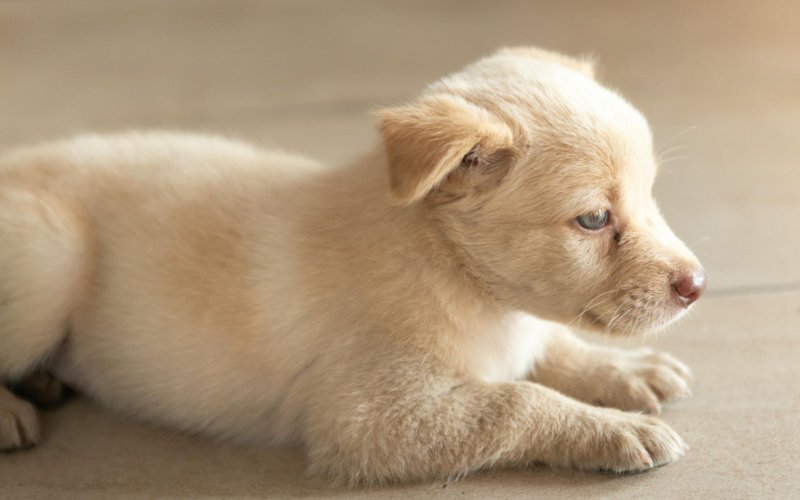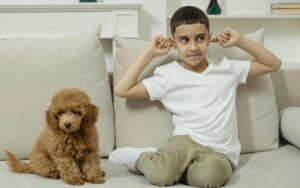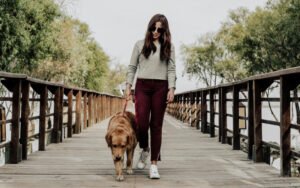Potty training your puppy is one of the most important tasks you’ll undertake as a new dog owner. It sets the foundation for good behaviour and helps create a harmonious living environment. While the process can sometimes be challenging, understanding the basics and using effective techniques will make it much easier. In this guide, we’ll explore essential tips and strategies to successfully potty train your puppy, ensuring they grow into a well-behaved and happy companion.
Table of Contents
Understanding the Basics of Puppy Potty Training
Potty training your puppy is one of the most essential aspects of responsible pet ownership. It lays the foundation for good behaviour and helps create a harmonious living environment. Understanding the basics can make the process smoother for both you and your puppy.
The Importance of Potty Training
Effective potty training is crucial for several reasons. First, it helps prevent accidents in your home, which can lead to damage and unpleasant odours. Second, it fosters a sense of security for your puppy. Knowing where and when to go to the toilet helps them feel more comfortable in their new surroundings. Finally, a well-potty-trained puppy is more likely to be welcome in social settings, making outings and visits to friends and family much more enjoyable.
Timing is Key
Potty training is most effective when started as soon as your puppy arrives home. Young puppies have limited bladder control, typically needing to relieve themselves every one to two hours. The earlier you begin the training process, the better your chances of success. Consistency and patience are vital during this phase, as every puppy learns at its own pace.
Establishing a Routine
Establishing a consistent potty routine is fundamental to the training process. Take your puppy out at regular intervals—after waking up, after meals, and after play sessions are ideal times. Additionally, be sure to take them out last thing at night and first thing in the morning. This routine helps your puppy learn when to expect potty breaks, reinforcing good habits over time.
Creating a Positive Environment
A positive environment plays a significant role in potty training your puppy. Use praise and treats to reward your puppy when they successfully go to the toilet in the designated area. This positive reinforcement encourages them to repeat the behaviour. Avoid scolding or punishing your puppy for accidents; this can create fear and anxiety, making the training process more difficult.
In summary, potty training your puppy is a crucial step in ensuring a well-adjusted pet. By understanding the basics—its importance, the need for a consistent routine, and the significance of positive reinforcement—you can help your puppy learn to go to the toilet in the appropriate places. With patience and dedication, you’ll both benefit from a happier, cleaner home.
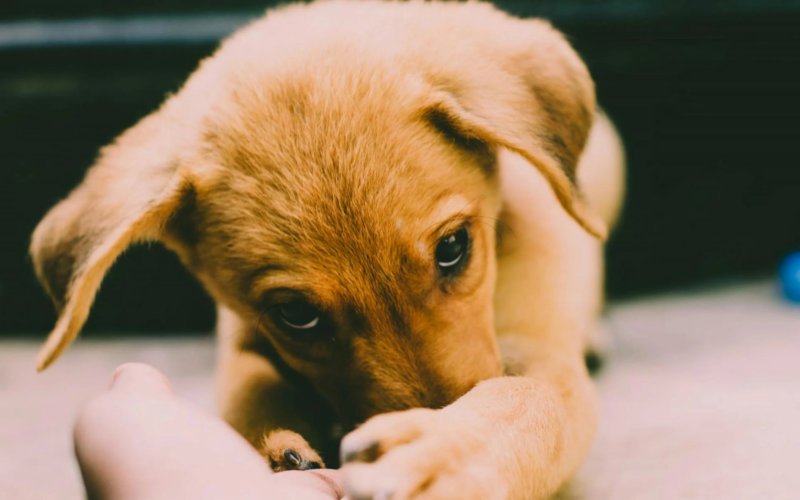
Choosing the Right Potty Training Method
When it comes to potty training your puppy, selecting the right method is crucial for success. Different approaches work for different puppies, and understanding the various methods can help you find the best fit for your lifestyle and your pet’s needs.
1. Crate Training
Crate training is a popular and effective method for potty training your puppy. The idea is to use a crate as a safe space for your puppy that also encourages them to hold their bladder. Puppies generally avoid soiling their sleeping area, so a crate can help them learn to wait until they are let outside.
To implement crate training, ensure the crate is appropriately sized—large enough for your puppy to stand, turn around, and lie down comfortably, but not so large that they can use one corner as a toilet. Gradually introduce your puppy to the crate, making it a positive experience with treats and praise. Take your puppy outside frequently, especially after meals and naps, to reinforce where they should go.
2. Paper Training
Paper training is another method, particularly useful for apartment living or during harsh weather conditions. This method involves laying down puppy pads or newspaper in a designated area for your puppy to relieve themselves. The key is to gradually move the paper closer to the door and eventually outside as your puppy learns the appropriate place to go.
While paper training can be convenient, it is essential to transition your puppy to outdoor potty breaks eventually. Many puppies can become accustomed to using indoor pads, making it more challenging to adjust to going outside later.
3. Outdoor Training
Outdoor training is the most straightforward method, as it encourages your puppy to do their business outside from the start. Take your puppy out regularly and use a consistent command, such as “go potty,” to signal that it’s time to relieve themselves. Praise and reward your puppy immediately after they go outside to reinforce this behaviour.
Outdoor training requires more diligence from you, as you’ll need to monitor your puppy closely and ensure they have ample opportunities to go outside. However, this method often leads to faster results, as it instils the idea that outdoor spaces are the correct place to potty.
4. Combination Methods
Many pet owners find that a combination of the above methods works best for potty training their puppy. For instance, you might use crate training during the night or when you’re unable to supervise your puppy, combined with outdoor training during the day. Adapting your approach based on your puppy’s progress and your lifestyle can lead to more effective results.
Finding What Works for You
Ultimately, the best method for potty training your puppy depends on your living situation, your puppy’s temperament, and your training preferences. Whichever method you choose, consistency, patience, and positive reinforcement are key. As you embark on the potty training journey, remember that every puppy learns at their own pace, and the right method will help set both you and your puppy up for success.
Establishing a Consistent Schedule
Establishing a consistent schedule is one of the most effective strategies for potty training your puppy. By creating a routine, you can help your puppy understand when and where they are expected to relieve themselves, significantly reducing the likelihood of accidents in your home.
Why a Schedule Matters
Puppies thrive on routine, and a consistent potty schedule helps them develop good habits. When your puppy knows when to expect potty breaks, they are less likely to have accidents indoors. Additionally, a set schedule can help you monitor your puppy’s bathroom habits, making it easier to identify any potential health issues.
Creating a Potty Training Schedule
To effectively establish a schedule for potty training your puppy, consider the following steps:
- Set Regular Feeding Times: Feeding your puppy at the same times each day can help regulate their bathroom habits. Puppies typically need to go to the toilet shortly after eating, so consistent feeding times will lead to predictable potty breaks.
- Frequent Potty Breaks: Young puppies have small bladders and will need to relieve themselves frequently. Take your puppy out every one to two hours, especially after meals, naps, and play sessions. As your puppy grows, you can gradually increase the time between potty breaks.
- Morning and Evening Routines: Make sure to include potty breaks in your morning and evening routines. Take your puppy outside first thing in the morning and last thing before bed. This helps reinforce the idea that these are important times to go potty.
- Watch for Signs: Keep an eye on your puppy for signs that they need to go, such as sniffing, whining, or circling. If you notice these behaviours, take your puppy outside immediately, even if it’s not time for a scheduled break.
Keeping the Schedule Consistent
Consistency is key when potty training your puppy. Stick to the schedule as much as possible, even on weekends or days off. If your puppy learns that they can delay potty breaks by waiting for you to be available, it may hinder their training progress.
Adjusting the Schedule as Needed
As your puppy matures and gains better bladder control, you may find that you can adjust the schedule. Older puppies can generally hold their bladders for longer periods, so gradually increase the time between potty breaks. However, always be attentive to your puppy’s needs and adjust the schedule based on their behaviour.
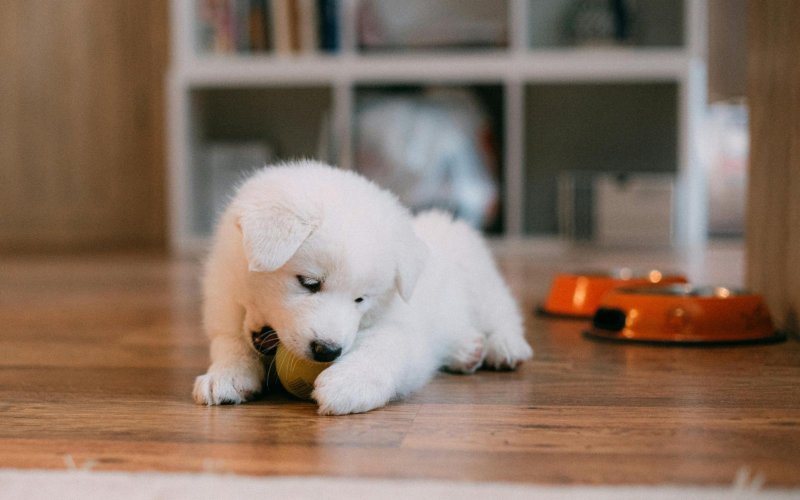
Recognising Signs That Your Puppy Needs to Go
One of the key aspects of successful potty training your puppy is learning to recognise the signs that indicate they need to relieve themselves. Being attentive to these signals can help you prevent accidents in the house and reinforce good bathroom habits. Here are some common signs that your puppy may need to go outside.
Common Signs to Look For
- Sniffing Around: Puppies often sniff the ground as they search for the perfect spot to do their business. If you see your puppy sniffing or exploring areas where they typically go to the toilet, it’s a clear sign they need to be taken outside.
- Circling or Pacing: If your puppy starts to circle or pace back and forth, they may be trying to find a place to relieve themselves. This behaviour indicates they are uncomfortable and need to go out.
- Whining or Barking: Vocalisations such as whining, whimpering, or barking can signal that your puppy needs to go outside. They may be trying to communicate their need to you, so pay attention to their vocal cues.
- Sudden Behaviour Changes: If your usually calm puppy suddenly becomes restless or anxious, this could be a sign they need a potty break. Look out for shifts in behaviour, such as excessive fidgeting or an inability to settle down.
- Heading for the Door: Many puppies will instinctively go to the door when they need to relieve themselves. If you notice your puppy approaching the door, it’s essential to respond promptly by taking them outside.
- Posturing: If you see your puppy squatting or lifting their leg in the house, it’s a clear indication they are about to relieve themselves. Acting quickly can help prevent accidents.
Why Timing Matters
Recognising these signs is particularly important during the early stages of potty training your puppy. Puppies have small bladders and may need to go outside more frequently. By understanding their signals, you can take them out at the right time, reinforcing their behaviour and making the training process smoother.
Responding to the Signs
When you notice any of these signs, take your puppy outside immediately. Use a consistent command, such as “go potty,” to encourage them to relieve themselves. After they go, be sure to reward them with praise or a small treat to reinforce the positive behaviour.
Setting Up a Designated Potty Area
Establishing a designated potty area is an essential step in potty training your puppy. This helps create a consistent and positive experience for your puppy when it comes to relieving themselves. A well-defined potty area not only reinforces where your puppy should go but also makes the training process easier for you. Here’s how to set up an effective potty area.
Choosing the Right Location
When selecting a location for your puppy’s potty area, consider the following factors:
- Accessibility: Choose a spot that is easily accessible for your puppy, especially for young or small breeds. The area should be close to your home, allowing for quick trips outside, especially during potty training.
- Quiet Environment: Look for a quiet and calm space where your puppy can feel relaxed while doing their business. Avoid areas with loud noises, heavy foot traffic, or distractions that may deter your puppy from focusing on the task at hand.
- Consistent Surface: Ideally, the designated potty area should have a consistent surface, such as grass, gravel, or soil. This helps your puppy associate the area with going potty. If you have a garden, consider a section where your puppy can freely relieve themselves without damaging other plants.
Marking the Potty Area
Once you have chosen the location, it’s important to mark the potty area clearly. You can do this by using flags, cones, or even a small fence to indicate the boundaries. This visual cue will help your puppy understand where they are supposed to go.
Encouraging Use of the Potty Area
To encourage your puppy to use the designated potty area, take them there regularly, especially after meals, playtime, and naps. Use a consistent command, such as “go potty,” to associate the area with the act of relieving themselves. Be patient and give your puppy plenty of time to explore and get comfortable in the space.
Rewarding Good Behaviour
When your puppy successfully uses the designated potty area, reward them immediately with praise or a treat. Positive reinforcement is a powerful tool in potty training your puppy, helping them understand that they have done the right thing. Consistency in rewards will reinforce their behaviour and encourage them to return to the area.
Cleaning Up
It’s essential to keep the designated potty area clean. Regularly pick up any waste and ensure the area is tidy. This not only maintains a pleasant environment but also encourages your puppy to continue using the space. If your puppy can smell their previous markings, they are more likely to return to that spot.
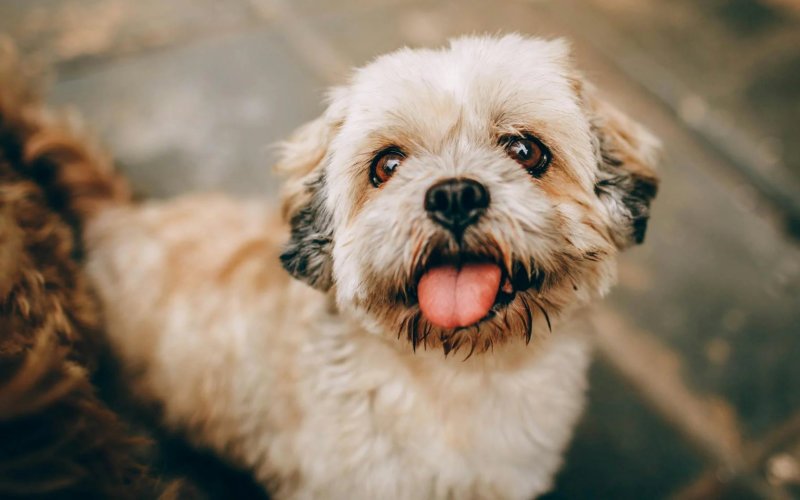
Positive Reinforcement Techniques
Positive reinforcement techniques are vital for effectively potty training your puppy. This method involves rewarding your puppy for good behaviour, helping them understand that going to the toilet in the right place is a desirable action. By consistently using positive reinforcement, you can make the potty training process smoother and more enjoyable for both you and your puppy.
Understanding Positive Reinforcement
Positive reinforcement works by associating a specific behaviour with a reward. When your puppy successfully uses the designated potty area, they receive a reward, such as praise, treats, or playtime. This encourages them to repeat the behaviour in the future. The key is to reward immediately after the desired behaviour so that your puppy can make the connection.
Types of Rewards
- Verbal Praise: Using a cheerful and enthusiastic voice to praise your puppy immediately after they go potty is incredibly effective. Simple phrases like “Good boy!” or “Well done!” help reinforce positive behaviour.
- Treats: Small, tasty treats can serve as powerful rewards for your puppy. Choose soft, bite-sized treats that are easy for your puppy to eat quickly. Be careful not to overfeed your puppy with treats, and ensure they are part of their overall diet.
- Playtime: Engaging in a short play session with your puppy can also act as a reward. After they successfully relieve themselves in the right spot, take a few minutes to play with their favourite toy or engage in a fun game of fetch.
Timing is Crucial
For positive reinforcement to be effective, timing is crucial. Always reward your puppy immediately after they finish going to the toilet. This helps them associate the act of relieving themselves in the designated area with positive outcomes. If you delay the reward, your puppy may not connect the dots and might not understand what they are being rewarded for.
Be Consistent
Consistency is key when using positive reinforcement techniques for potty training your puppy. Ensure that everyone in your household is on the same page and uses the same commands and rewards. This helps prevent confusion and reinforces the desired behaviour across the board.
Avoiding Negative Reinforcement
While it’s important to focus on positive reinforcement, avoid negative reinforcement methods such as scolding or punishing your puppy for accidents. This approach can create fear and anxiety, making potty training more challenging. Instead, redirect your puppy to the designated potty area and reward them when they go there.
Common Challenges and Solutions
Potty training your puppy is a rewarding experience, but it can also come with its share of challenges. Understanding these common issues and knowing how to address them will make the process smoother for both you and your puppy. Here are some frequent challenges you may encounter during potty training and effective solutions to overcome them.
1. Accidents Indoors
Challenge: Accidents are a natural part of the potty training process, especially during the initial stages. You may find your puppy relieving themselves inside the house, which can be frustrating.
Solution: When accidents happen, it’s essential to stay calm. Clean the area thoroughly with an enzyme-based cleaner to remove any lingering smells that may encourage your puppy to go there again. Reinforce the importance of the designated potty area by taking your puppy there immediately after an accident and rewarding them when they go in the right spot. Maintain a consistent schedule to reduce the chances of accidents.
2. Frequent Urination
Challenge: Some puppies may need to go outside more frequently than others, making it seem like they’re having difficulty with potty training.
Solution: Puppies have small bladders and may need to relieve themselves every hour or two, especially after meals, playtime, or waking up from naps. Establish a consistent routine, taking your puppy out regularly to prevent accidents. As they grow, their bladder control will improve, and the frequency will decrease.
3. Fear of Going Outside
Challenge: Some puppies may feel anxious or fearful about going outside, especially if they have had a negative experience, such as encountering loud noises or unfamiliar sights.
Solution: Create a positive and calm environment for your puppy when going outside. Start by introducing them to the outside gradually, allowing them to explore at their own pace. Use treats and praise to create a positive association with going outside. If your puppy continues to show fear, consider working on their socialisation skills to build their confidence in new environments.
4. Resistance to the Designated Area
Challenge: Your puppy may resist using the designated potty area, preferring to go elsewhere.
Solution: Make the designated area more appealing by ensuring it’s clean and well-maintained. Take your puppy to this area consistently, and reward them when they use it. If your puppy prefers a different spot, you can gradually move the potty area closer to that location, ensuring they understand where they are supposed to go.
5. Regression in Behaviour
Challenge: It’s not uncommon for puppies to regress in their potty training behaviour, especially during stressful situations or changes in routine.
Solution: If your puppy starts having accidents after previously being well-trained, return to the basics. Re-establish a consistent routine, and increase the frequency of trips to the designated potty area. Be patient and supportive, as it may take time for your puppy to readjust.
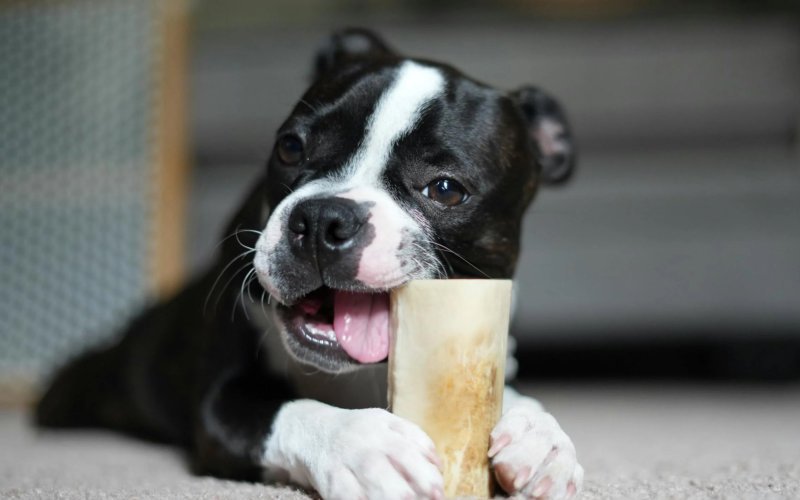
When to Seek Professional Help
Potty training your puppy can be a rewarding journey, but there are instances where you may find it beneficial to seek professional help. Recognising when to turn to a dog trainer or behaviourist can save you time, frustration, and ensure that your puppy learns appropriate potty habits. Here are some key indicators that it might be time to get expert assistance.
1. Persistent Accidents
If your puppy continues to have accidents indoors despite your best efforts, it may be time to consult a professional. While accidents are common during the training process, frequent and ongoing issues can indicate a deeper problem. A dog trainer can assess your techniques, identify potential mistakes, and provide tailored strategies to help your puppy succeed.
2. Extreme Anxiety or Fear
Some puppies experience severe anxiety or fear when it comes to potty training, particularly about going outside. If your puppy shows signs of distress, such as excessive barking, trembling, or refusing to go outside, professional help may be necessary. A behaviourist can work with you and your puppy to address these fears, helping your puppy feel more comfortable in their environment.
3. Lack of Progress
If you feel that you’ve tried various methods without any noticeable progress, it may be time to seek professional guidance. A trainer can evaluate your training methods and suggest alternative approaches that may work better for your puppy’s unique temperament and personality.
4. Medical Concerns
If your puppy is having frequent accidents or seems unable to control their bladder despite being regularly taken outside, it’s essential to consult a veterinarian. Medical issues, such as urinary tract infections or other health concerns, can affect your puppy’s potty habits. A vet can provide a thorough examination and recommend appropriate treatment if necessary.
5. Changes in Household Dynamics
Changes in your household, such as moving to a new home, the arrival of a new family member, or the loss of another pet, can impact your puppy’s behaviour. If your puppy is struggling to adjust and this is affecting their potty training, a professional can help navigate these changes and support your puppy through the transition.
Tips for Maintaining Progress
Once you’ve successfully begun potty training your puppy, it’s important to maintain that progress to ensure they continue to develop good habits. Potty training your puppy requires consistency and vigilance, but with the right strategies, you can reinforce their training and avoid setbacks. Here are some effective tips to help you maintain your puppy’s potty training progress.
1. Stick to a Consistent Routine
Consistency is key when potty training your puppy. Establish a daily schedule for feeding, potty breaks, and playtime. Taking your puppy out at the same times each day helps them understand when to expect potty breaks and reinforces the behaviour you want to encourage. Aim for regular outings, especially after meals, playtime, and naps.
2. Use Positive Reinforcement
Continue to use positive reinforcement techniques to encourage your puppy when they go in the designated potty area. Praise them enthusiastically and offer treats immediately after they relieve themselves outside. This will help solidify the association between going outside and receiving positive feedback, making them more likely to repeat the behaviour.
3. Monitor Your Puppy’s Behaviour
Keep an eye on your puppy’s behaviour, especially during playtime or when they seem restless. If you notice signs that they need to go—such as sniffing the ground, circling, or whining—take them outside immediately. The sooner you respond to these cues, the less likely they are to have an accident indoors.
4. Maintain a Designated Potty Area
Ensure that the designated potty area remains clean and accessible. A tidy space encourages your puppy to use it consistently. If you have a garden, consider using a specific spot for their potty needs. Regularly cleaning this area helps prevent odours that might confuse your puppy and keeps the space inviting.
5. Be Patient and Understanding
Puppy potty training is a learning process, and there may be occasional setbacks. If your puppy has an accident, avoid scolding them. Instead, calmly clean up the mess and focus on reinforcing the positive behaviour you want to see. Patience and understanding will help your puppy feel secure and more willing to learn.
6. Gradually Increase Independence
As your puppy becomes more reliable in their potty habits, gradually increase their independence. This might mean giving them access to more areas of your home or allowing them to signal when they need to go out. However, continue to monitor their behaviour closely, especially during this transitional phase.
7. Keep Up with Vet Visits
Regular veterinary check-ups are essential to ensure your puppy’s overall health, which can directly impact their potty training progress. If you notice any changes in your puppy’s toilet habits, such as increased accidents or difficulty urinating, consult your vet to rule out any medical issues.

Conclusion and Final Thoughts
Potty training your puppy is a vital step in nurturing a well-behaved and happy companion. Throughout this journey, it’s essential to understand the basics of potty training, choose the right methods, establish a consistent schedule, and recognise the signs that your puppy needs to go. Positive reinforcement, setting up a designated potty area, and maintaining progress with patience and understanding are all crucial elements of successful training.
Remember, every puppy is unique, and what works for one may not work for another. Stay flexible and be prepared to adapt your approach as needed. If you encounter challenges or have concerns about your puppy’s behaviour, don’t hesitate to seek professional help.
With dedication, consistency, and the right techniques, you can ensure that potty training your puppy is a smooth and rewarding experience, setting the foundation for a strong bond and a well-mannered dog. Enjoy the journey, and celebrate your puppy’s successes along the way!

